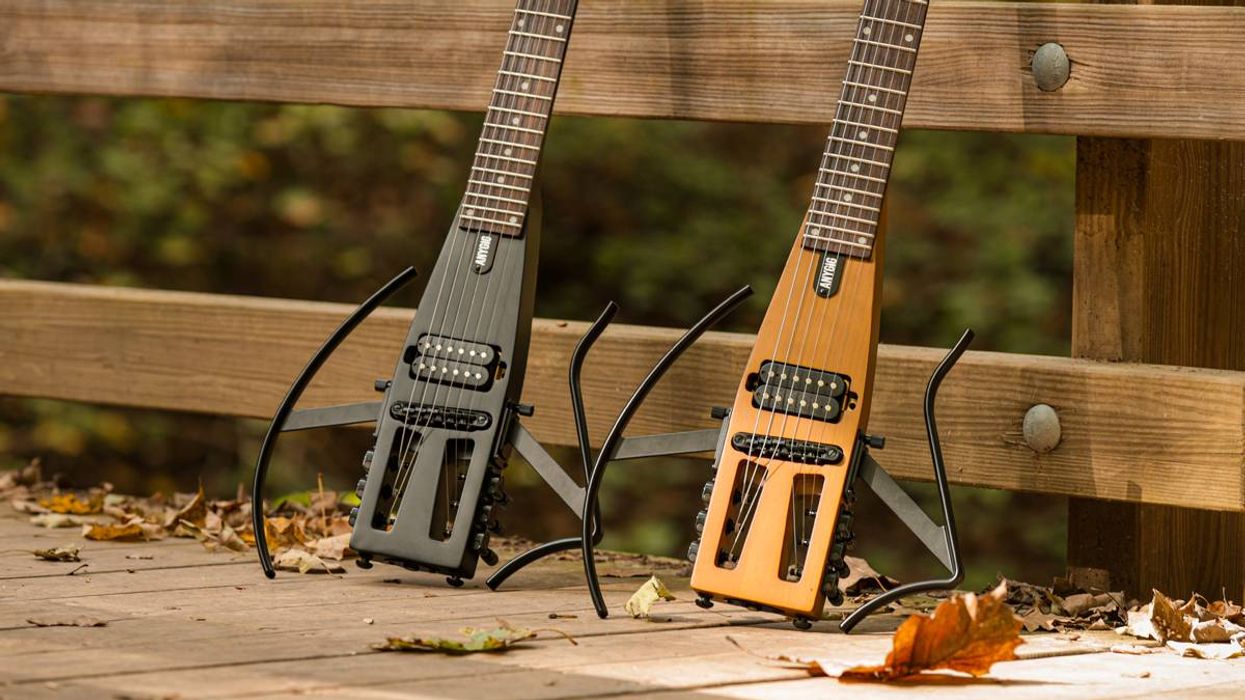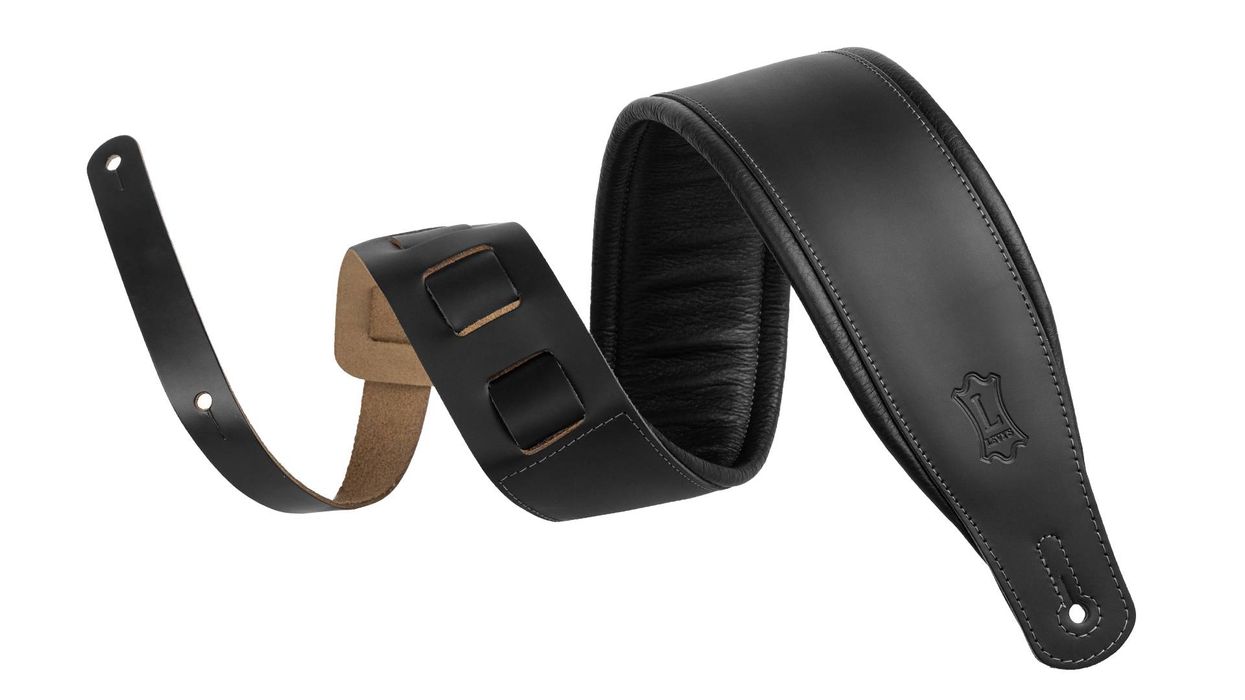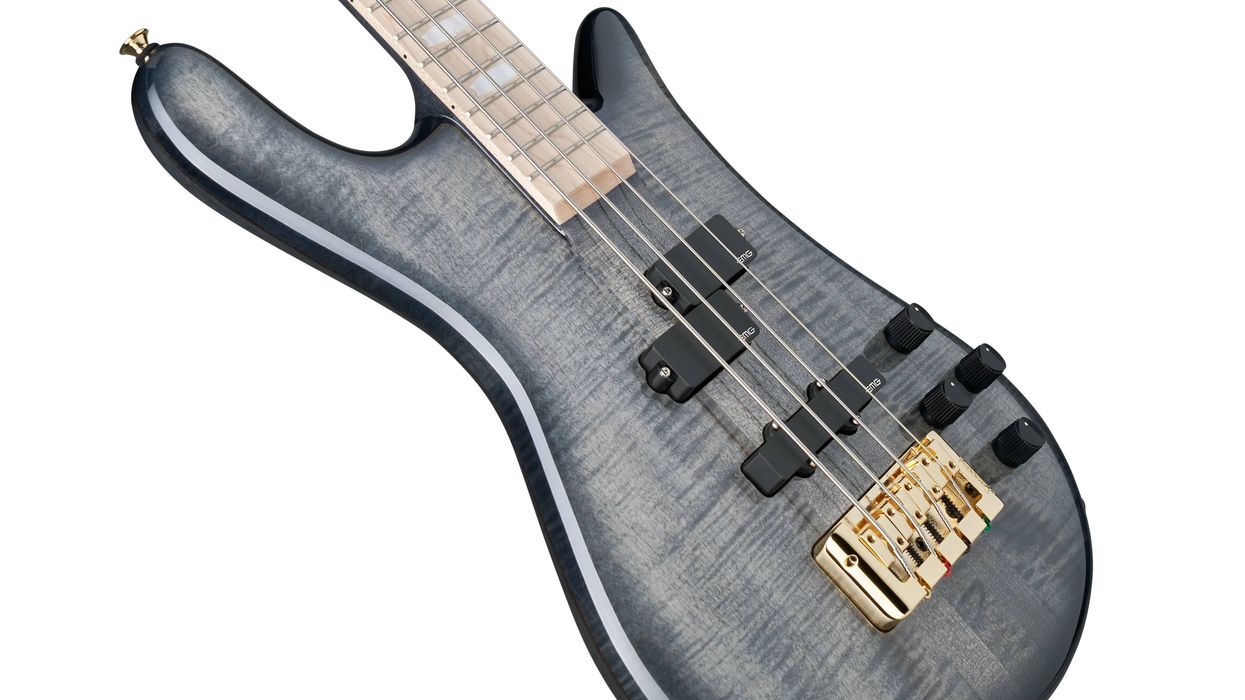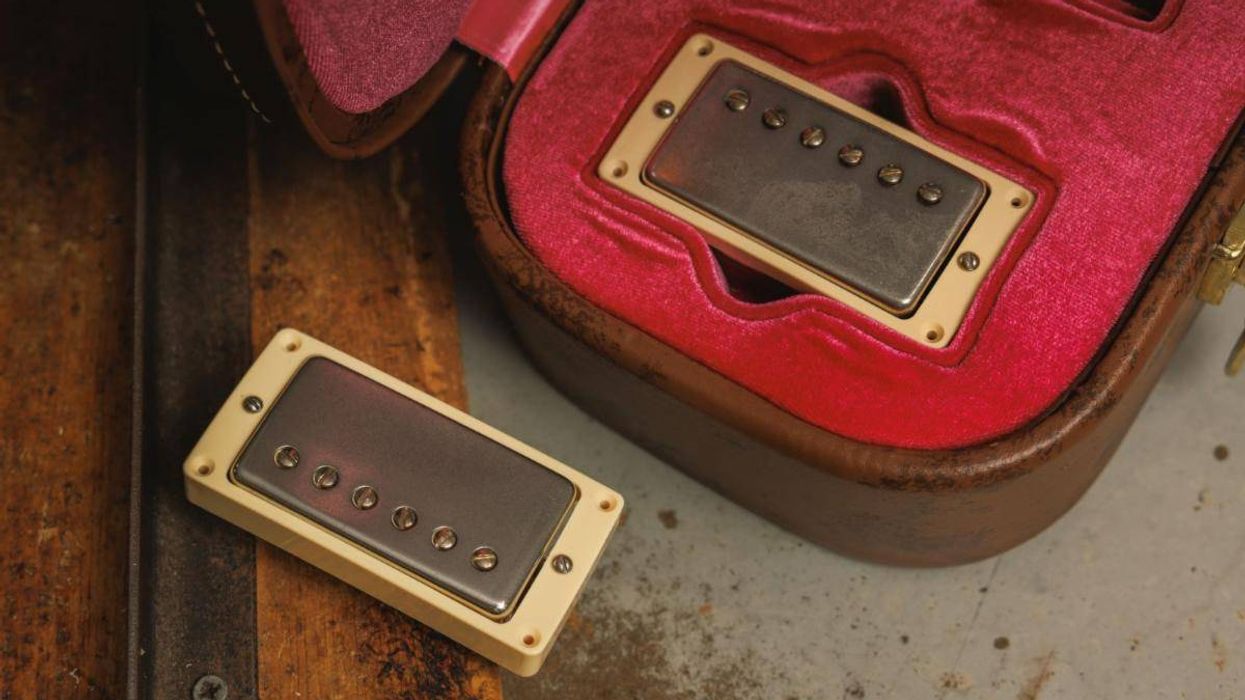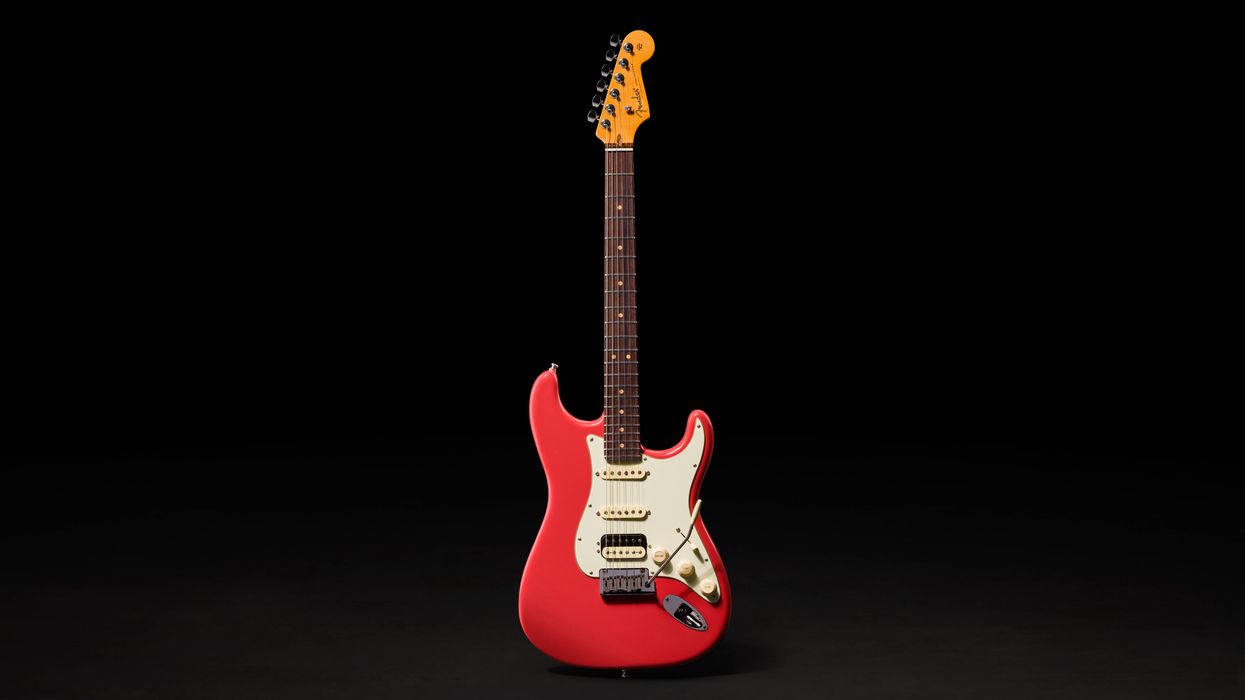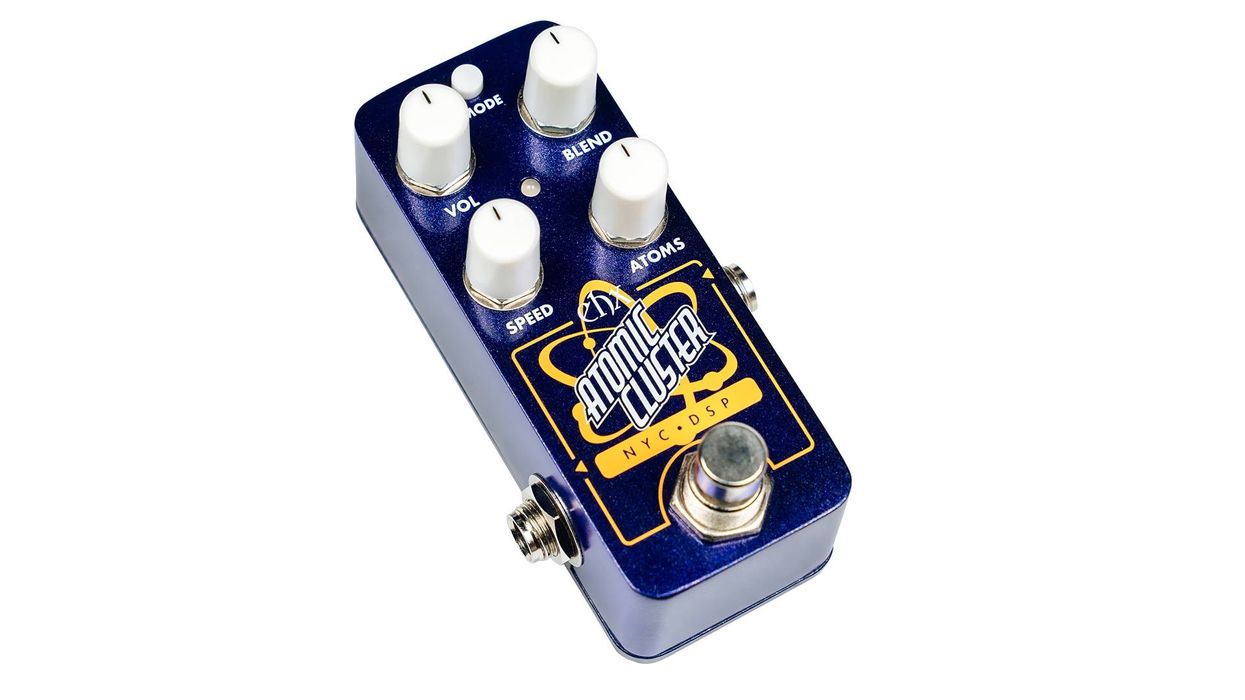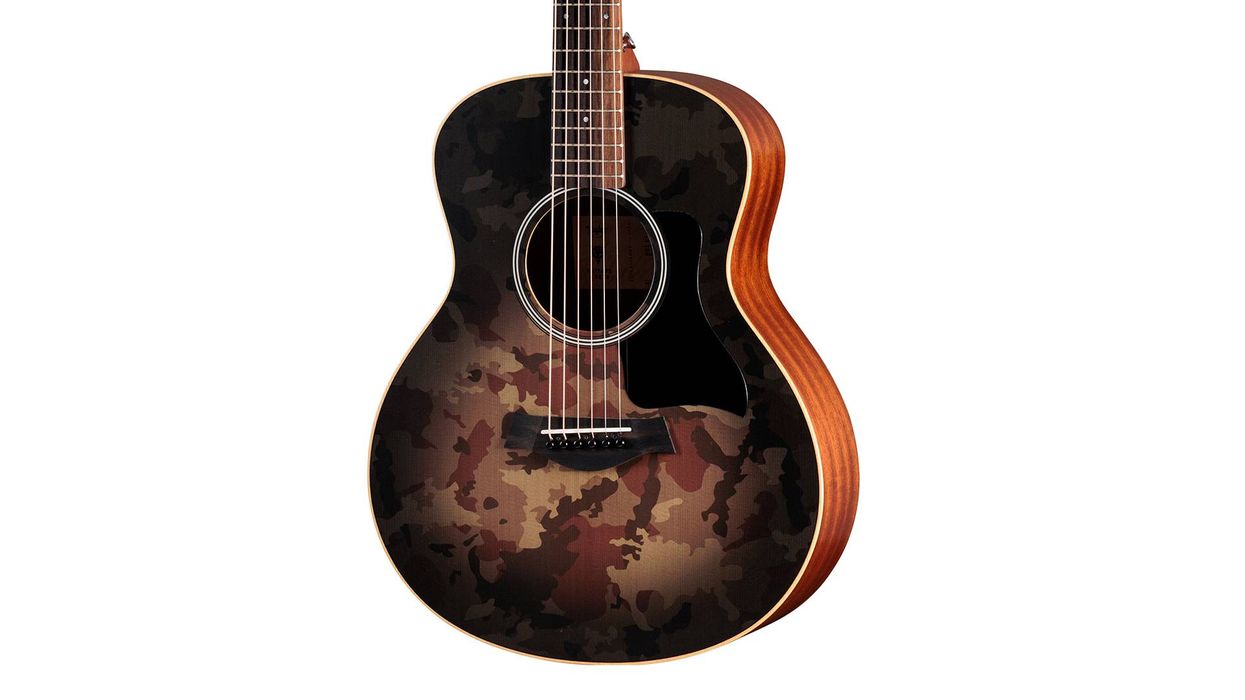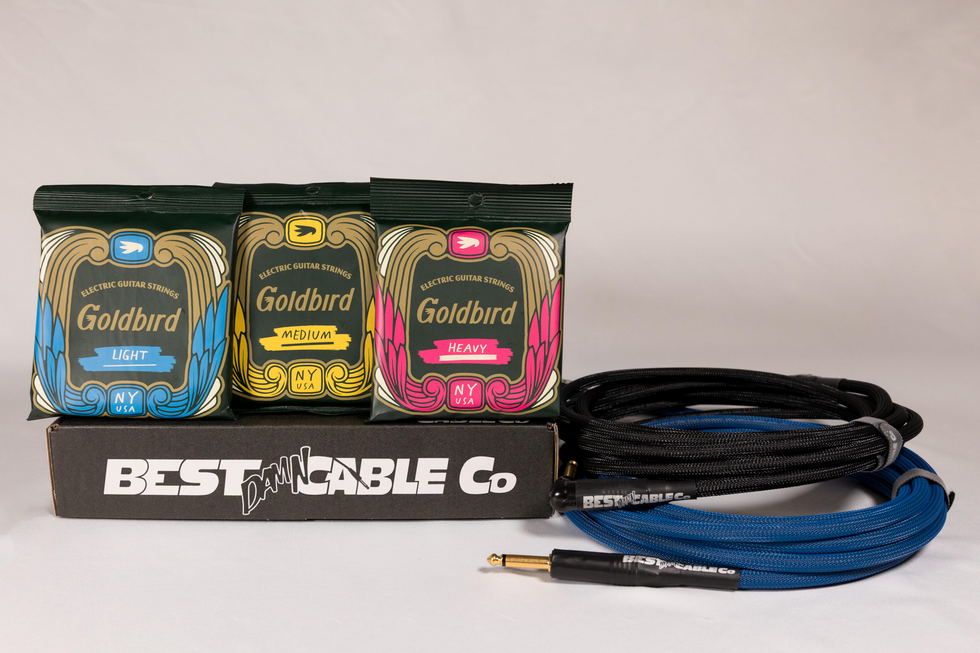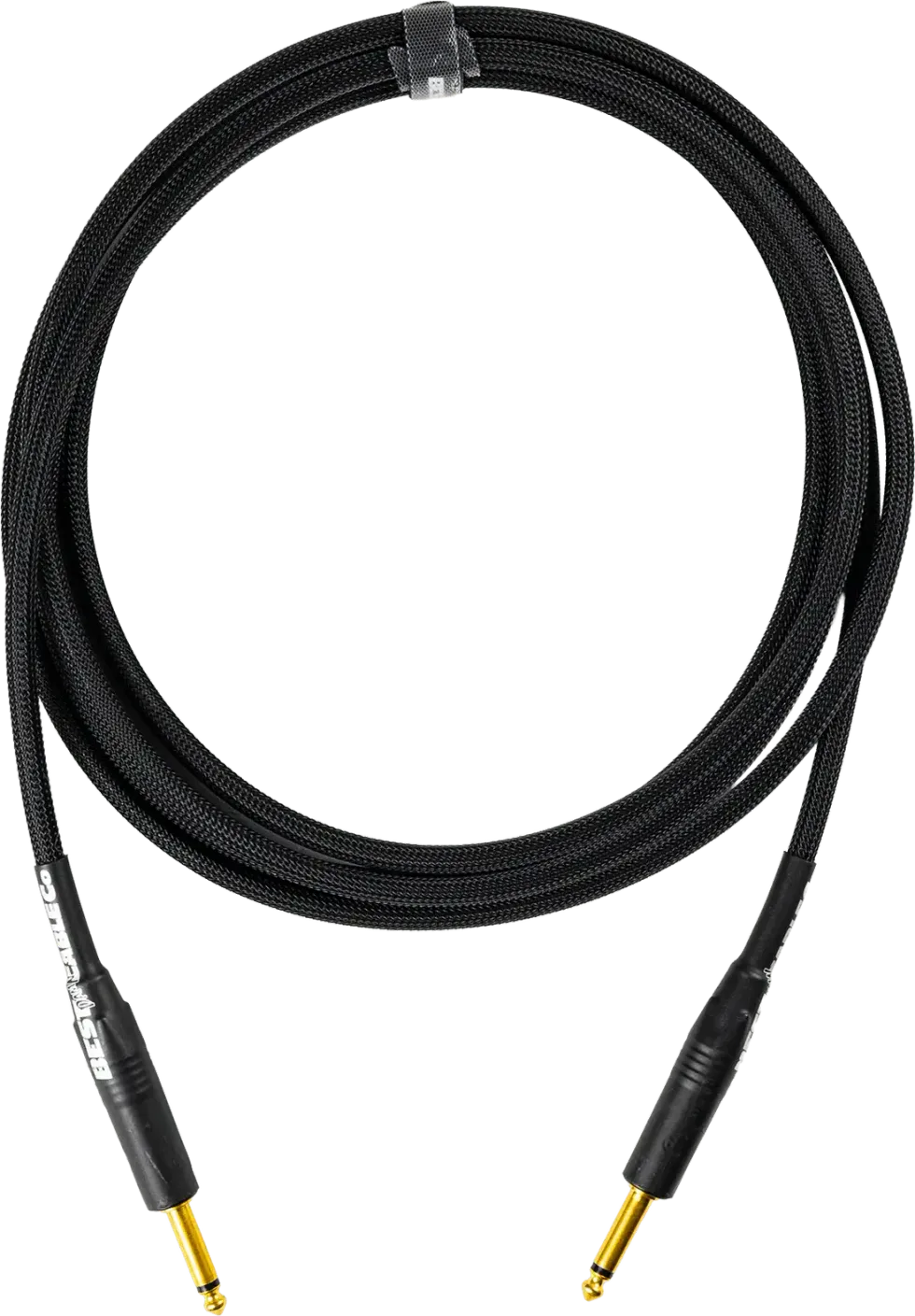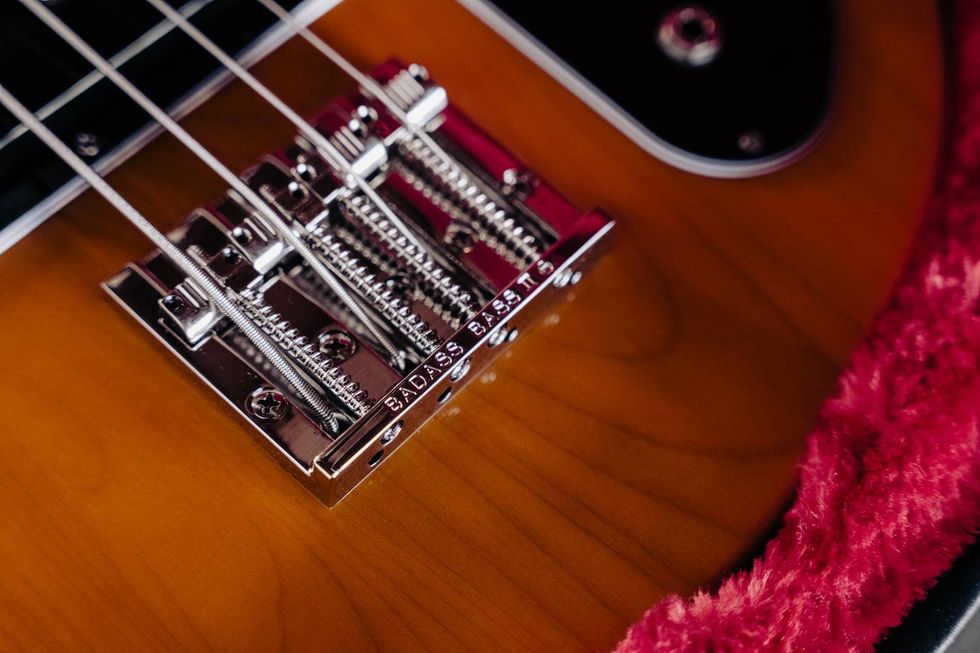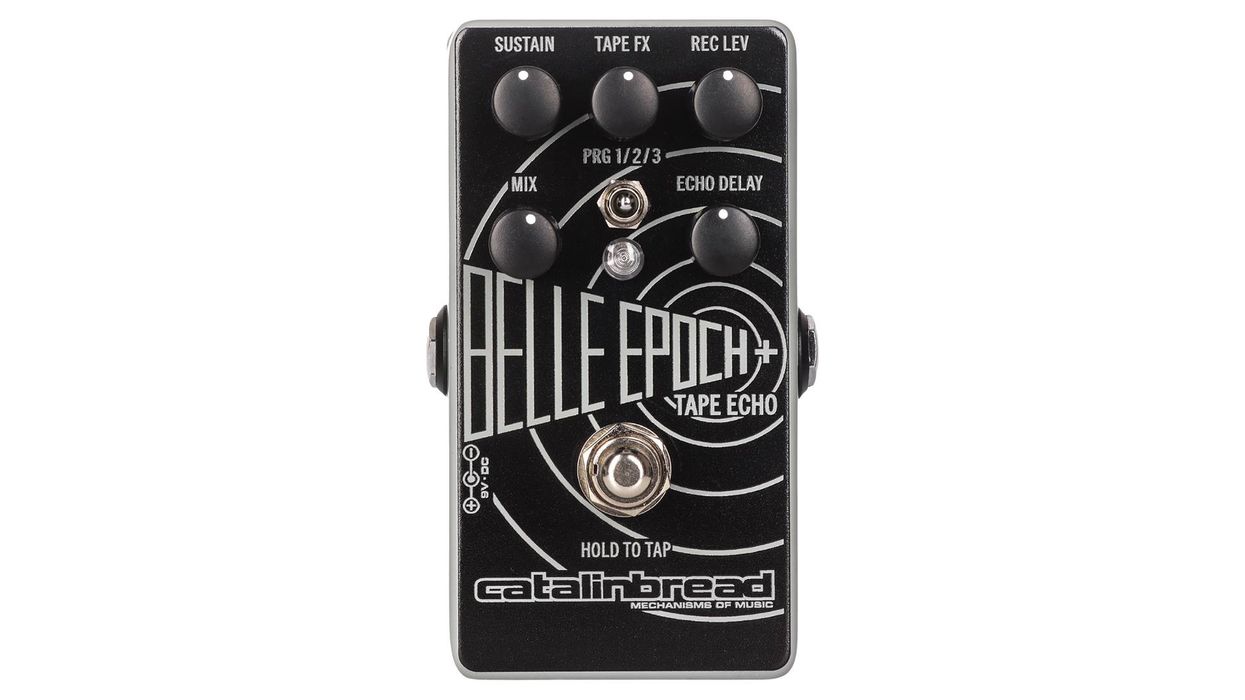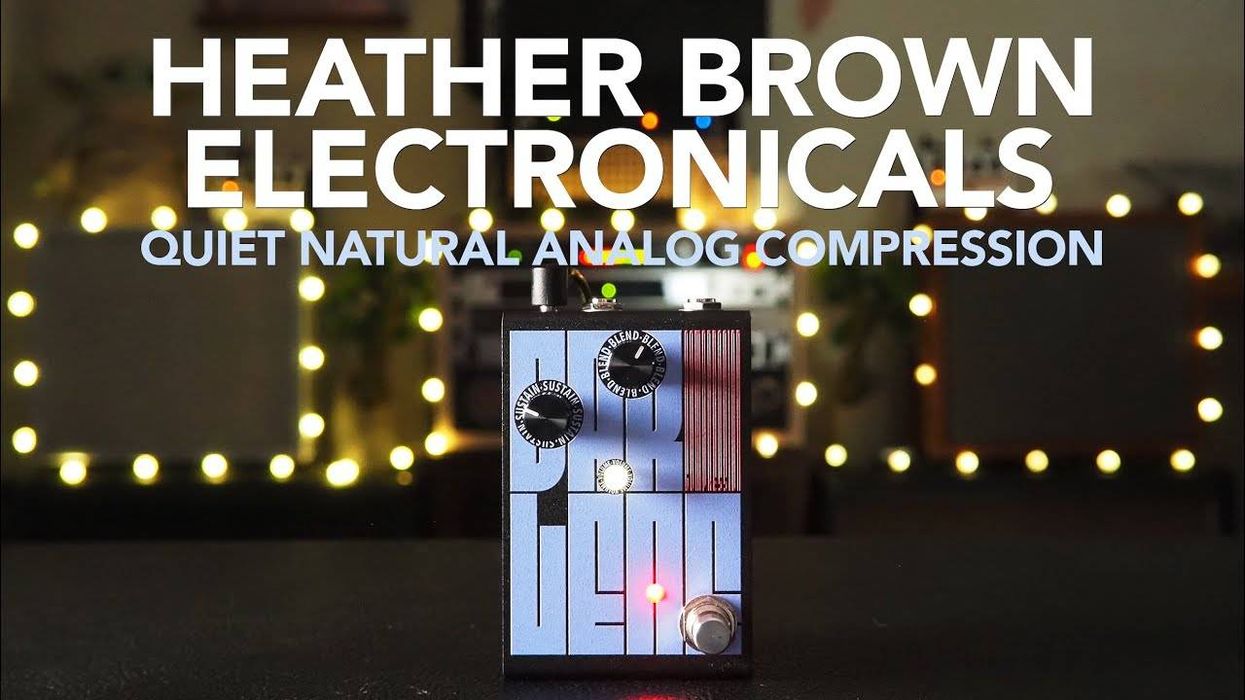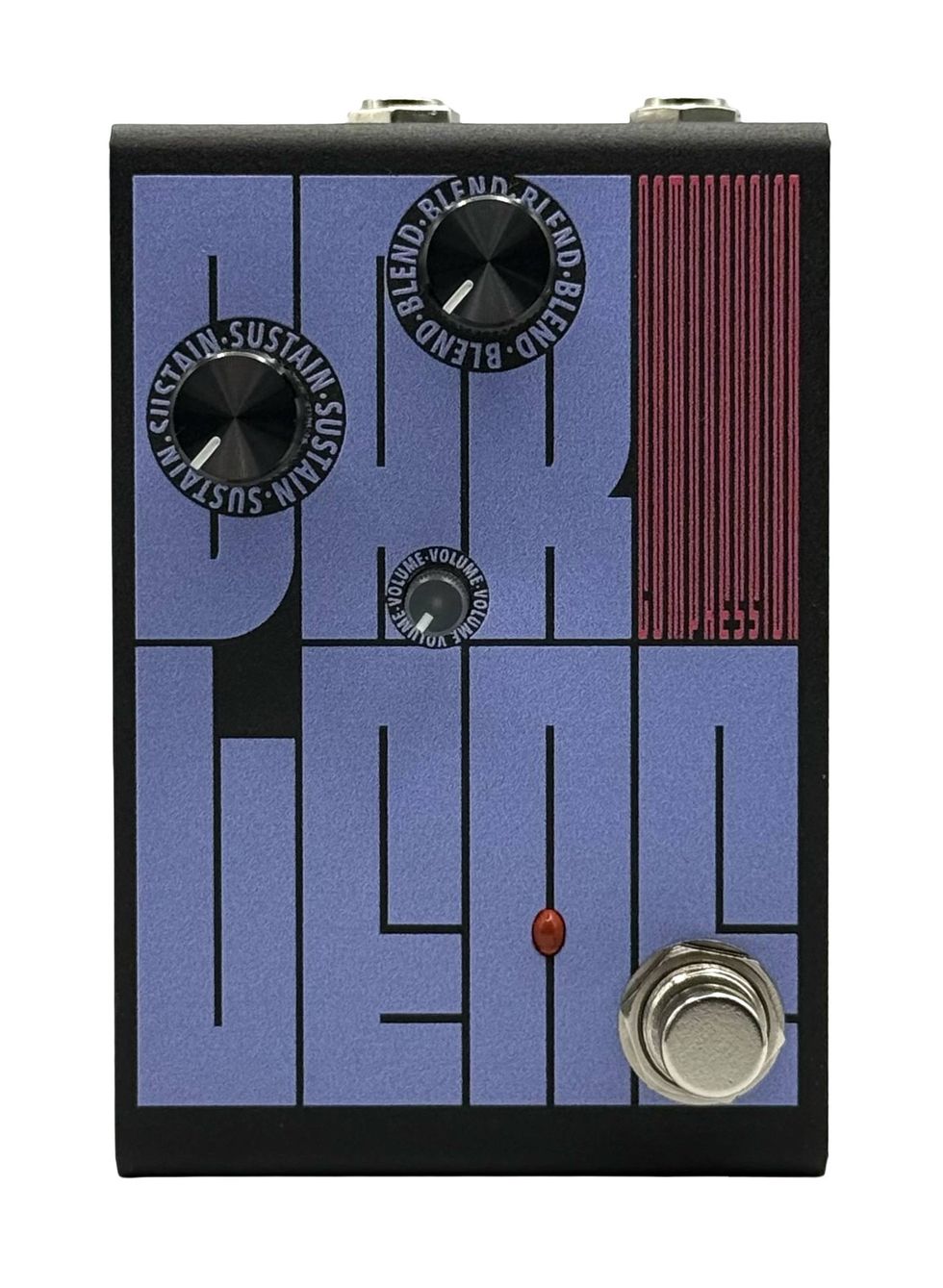For all the talk we do here at Premier Guitar about high-end cables and the tonal beauty of a physical connection with an amp, we can’t forget that there’s an entire segment of players and musicians who have permanently escaped the chains that conspire to keep us in one place. Whether you’re looking to prowl a festival stage or finally pull off that backflip during rehearsal, wireless technology provides the freedom to express yourself through more than just notes.
Unfortunately, most wireless devices used by musicians also operate in bands of the frequency spectrum currently undergoing big changes. Broadcasters in the US are in the midst of a transition from analog to digital transmissions (due to be completed by June 12, 2009). Meanwhile, the FCC has auctioned off and set aside a portion of the frequency spectrum, known popularly as the 700 MHz band, for both emerging wireless technologies and public safety use. With these changes, a combination of regulatory murkiness and general misinformation has sent waves of fear through communities relying on wireless technologies. Come June 12th, will your wireless systems still work? Will they work clearly? Will they be illegal?
It is a question we’ll explore in two parts to help you understand the implications of all this change—what the coming digital transition means most immediately for your wireless setup, and what you can expect to happen in the future as more advanced wireless technologies begin using the already-crowded frequency spectrum.
The Immediate Concern: The Digital Switchover
Before the switchover to digital television and the FCC’s decision to auction off a chunk of the UHF band, analog television was broadcast in in a broad band of the UHF spectrum spanning from 470 MHz to 806 MHz. UHF wireless systems also operate in this band, in a handful of frequencies including the 600s and 700s. Because of the FCC’s decision to auction off the 700 MHz band—a range of frequencies from 698 to 806 MHz—all digital television broadcasts will transmit at below 698 MHz starting in June, leaving the 700 MHz band to emerging technologies and public safety uses.
The good news is that the change wasn't a surprise. The FCC announced its decision to auction off this range of frequencies way back in 1998, meaning major manufacturers have had ample time to prepare and design around the restriction. As such, new wireless systems operate in frequencies outside of that 700 MHz band, meaning that only legacy users have the potential to be affected by the switch.
But what if you’re still using one of these older units? The good news is that your unit will not be rendered completely obsolete come June 12th, nor will it become FCC-mandated contraband. Although the FCC has stopped providing new licenses for wireless devices operating in the 700 MHz band, it has not set forth any rules on how to treat these current licensed users in this band, and no one is exactly sure when that will happen. That means that users with wireless systems in that 700 MHz band will still be able to use their gear without the Feds showing up at the door.
The bad news is that you’ll likely need to transition to a newer system rather than later. Because the frequencies of the 700 MHz band have been sold to companies like Verizon, who will be using it to improve their network, legacy users will soon be fighting a lot more people for the same bandwidth. This will eventually translate into more interference and problems for users of older wireless systems. “Conventional UHF wireless systems will be much more difficult to use in the future, and for most people they will probably be unusable within a period of a few years,” says Don Boomer, Product Manager for X2 Wireless. “The closer to a big city you are, the harder it is going to be.”
Interestingly enough, users of newer wireless technologies (those operating outside of the 700 MHz band) may actually experience a slight performance bump after the June switchover. This is because during the transition, many television stations were broadcasting both analog and digital signals, which effectively doubled the number of transmitters inhabiting the lower ranges of the frequency spectrum. Many users in dense areas found that they needed to locate new channels or frequencies to operate on during the switch. On June 12th, half of these transmissions will cease again as analog television takes its last breath, and a number of frequencies will be vacated, theoretically making it easier for wireless users to find a signal.
Hit page 2 for future implications...
The Distant Future: White Spaces & TVBDs
As one of the benefits of the digital switchover in June, the ending of analog television transmissions will leave a number of “white spaces” in the UHF frequency spectrum. The FCC will make these frequencies available for use by any number of emerging technologies, referred to by the FCC as Television Band Devices (TVBDs). As the name implies, these devices will operate in vacated television bands and include both fixed devices, such as stationary units delivering high-speed internet to rural areas over the air, and low-powered portable devices using wireless signals to expand their functionality (think of Bluetooth technologies, only with more kick).
This is exciting news for tech heads and consumers who want the most from their technology (“Imagine an iPhone that’s an order of magnitude better than what we have now,” says X2’s Boomer), but these TVBDs will also be operating in the same bands of frequencies as analog wireless units, both new and old. As you might expect, usage of these white spaces has the potential to increase interference for wireless device users, and audio companies like Shure, recognizing the threat, have been consistently and aggressively lobbying the FCC for guidelines on the operation of these devices.
The lobby effort seems to have paid off. The FCC has mandated that TVBDs include a range of features designed to limit or eliminate interference with existing, licensed wireless users, including spectrum sensing and adaptive power designs that reduce output power when used in environments populated by wireless devices. Unfortunately, these advanced technologies have a long way to go towards maturity, and the FCC has been fairly quiet on the issue, adding to the general sense of uncertainty hanging over both manufacturers and users. “A lot of [interference-avoidance technology] has not been demonstrated to be fully functional, so it’s going to be some time before these devices start showing up in the market,” says Gary Boss, Product Manager for Audio-Technica. “Frankly, everything we can do now is just hypothesizing about what the situation is going to be. It’s all in a state of flux.”
The Solutions
So what’s a wireless user to do? With the knowledge that TVBDs accessing the soon-to-be created “white spaces” are still a number of years away, and the assurance that the FCC will build in safeguards to keep interference at bay, players can buy a new wireless system from any of the major manufacturers with confidence. For users of older wireless technologies, most companies are now offering a rebate program towards the purchase of a new system with the trade-in of your old one, making it easier and more affordable to make sure your signal stays intact.
For forward-thinking individuals looking to sidestep the impending white spaces issue altogether, a number of companies are selling or developing technologies that promise to make this entire point moot. X2 Wireless’ offerings all operate outside of the affected UHF bands, and instead work in what are called the ISM bands (Industrial-Scientific-Medical), a series of six bands intended solely for low-powered digital devices. X2’s units operate between 902 and 928 MHz, although another promising band for wireless manufacturers exists at 2.4 GHz, which is where wireless LANs currently exist. Although X2 acknowledges that their product's range is shorter than that of their analog peers (50 feet, compared to the typical 300 feet), the clarity and precision of digital technology make it a promising alternative for many players.
Similarly, Audio-Technica has developed a new high-end digital technology called Ultra Wide Band (UWB)that operates in the 6 GHz range. Although it is currently only available to "install clients" and corporate customers, a number of innovations in UWB devices make this a promising sidestep for large customers trying to tackle the white spaces issue. “Owners of that system don’t have to read any of this,” says AT’s Boss. While the technology remains beyond the financial grasp of the average player, consumers can expect these advances to trickle down fairly quickly.
Of course, as technology continues its relentless march forward, it’s likely that some new device in the future will find a way to interfere with even these advanced wireless systems. But until then, you need not worry—the newest generation of wireless technologies will give you reliable performance for the foreseeable future. And if you’re still feeling a little anxious, maybe it’s time to switch back to cable.
Wireless Systems and the Digital Conversion
Have you heard the rumors that your wireless system won’t work come June, or that it will be illegal? We set the story straight.
By Adam MooreApr 30, 2009
Adam Moore
Adam Moore mashes together a serious potato of hard rock, jazz, orchestral, metal and experimentalism to bring you not-your-average guitar god type stuff.
